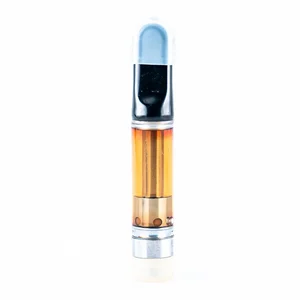In the ever-evolving world of cannabis, consumers are faced with a wide array of choices, each offering a unique experience. Among these options, the distinction between hash and weed has been a topic of ongoing discussion and curiosity. While both are derived from the same plant species, Cannabis sativa, their composition, potency, and effects differ significantly.
Unveiling the Nature of Hash
Hash, short for hashish, is a concentrated form of cannabis that is produced by collecting and processing the trichomes, the resinous glandular structures found on the surface of the weed plant. These trichomes are rich in cannabinoids, including THC (tetrahydrocannabinol) and CBD (cannabidiol), as well as various terpenes and flavonoids.
Making hash involves separating the trichomes from the plant material through various methods, such as sieving, rubbing, or solvent extraction. The resulting product is a compact, resinous substance that can be consumed in various ways, including smoking, vaporizing, or adding to edibles. One of the notable characteristics of hash is its potency. Due to the concentration of trichomes, hash typically contains higher levels of THC and other cannabinoids compared to traditional leaf weed. This potency can result in a more intense and long-lasting psychoactive experience for consumers.
Exploring the World of Weed
On the other hand, weed, also known as marijuana, refers to the dried flowers, leaves, and stems of the cannabis plant. Unlike hash, weed contains a more balanced array of plant material, including trichomes, but also a significant amount of plant matter.
When consumed, weed delivers a more well-rounded experience, with the effects of the various cannabinoids and terpenes interacting to produce a unique and nuanced understanding. While the potency of weed can vary depending on the strain and growing conditions, it is generally considered less potent than hash in terms of THC content.
Cannabis Extracts: Bridging the Gap
In recent years, the cannabis industry has witnessed a surge in the popularity of cannabis extracts, which blur the lines between hash and weed. These extracts, often called concentrates or dabs, are produced using advanced extraction methods that isolate and concentrate the active compounds from the plant material.
Cannabis extracts can take various forms, including waxes, shatters, and oils, and are renowned for their exceptional potency and purity. While not traditionally categorized as hash, these extracts share similarities in their concentrated nature and high cannabinoid content.
The Versatility of Hybrids
In addition to the classic distinctions between hash and weed, the cannabis market has also embraced the concept of hybrids weed strains. These strains are created by cross-breeding different varieties of cannabis plants, combining the unique characteristics of indica and sativa strains.
Hybrid strains can offer a harmonious blend of effects, combining the relaxing properties of indicas with the uplifting and energizing qualities of sativas. This versatility has made hybrids increasingly popular among consumers seeking a balanced and tailored experience.
Consumption Methods and Experiences
The consumption methods for hash and weed can also differ significantly. While weed is commonly smoked or vaporized in its dried flower form, hash is often consumed by sprinkling it on top of a bowl of weed or by using specialized smoking devices like hash pipes or hookahs.
The experiences associated with hash and weed can vary based on the specific strains, potency levels, and individual tolerance. In general, hash is known for delivering a more intense and prolonged psychoactive effect due to its higher THC concentration. Weed, conversely, can offer a more nuanced and balanced experience, with a wider range of effects influenced by its unique terpene and cannabinoid profile.
FAQs
What is the main Hash vs weed difference?
Hash is a concentrated form of cannabis made by collecting and processing the trichomes, while weed refers to the dried flowers, leaves, and stems of the cannabis plant.
How do the potency levels of hash and weed compare?
Generally, hash is considered more potent than weed due to its higher concentration of cannabinoids like THC, resulting from the extraction and isolation of trichomes.
Can hash and weed be consumed in the same way?
While weed is commonly smoked or vaporized in its dried flower form, hash is often sprinkled on top of weed or consumed using specialized smoking devices like hash pipes or hookahs.
What are cannabis extracts, and how do they relate to hash?
Cannabis extracts, such as waxes, shatters, and oils, are highly concentrated products made using advanced extraction methods. While not traditionally categorized as hash, they share similarities in their concentrated nature and high cannabinoid content.
What are hybrid strains, and how do they differ from hash and weed?
Hybrid strains are created by cross-breeding different varieties of cannabis plants, combining the unique characteristics of indica and sativa strains. They offer a harmonious blend of effects, catering to consumers seeking a tailored experience.
Conclusion
In the vast and intricate world of cannabis, the distinction between hash and weed represents a fascinating exploration of potency, effects, and consumption methods. While both share a common origin, the concentrated nature of hash and the more balanced composition of weed offer unique experiences for consumers.
As the cannabis industry continues to evolve, the introduction of innovative products like cannabis extracts and hybrid strains further expands the spectrum of choices available. This diversity empowers consumers to tailor their experiences to their preferences and desired effects. However, it is essential to approach the consumption of hash, weed, and all cannabis products with responsibility, moderation and respect for individual differences; we can collectively unlock the full potential of this remarkable plant and its diverse offerings.



